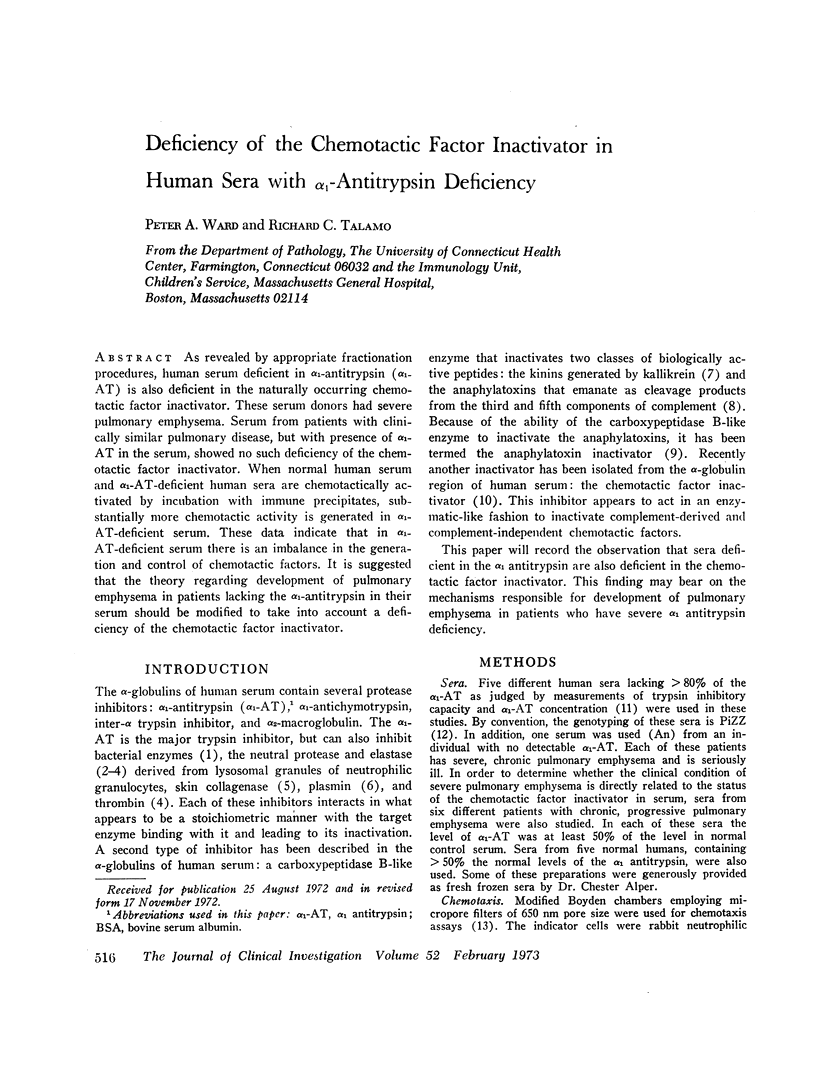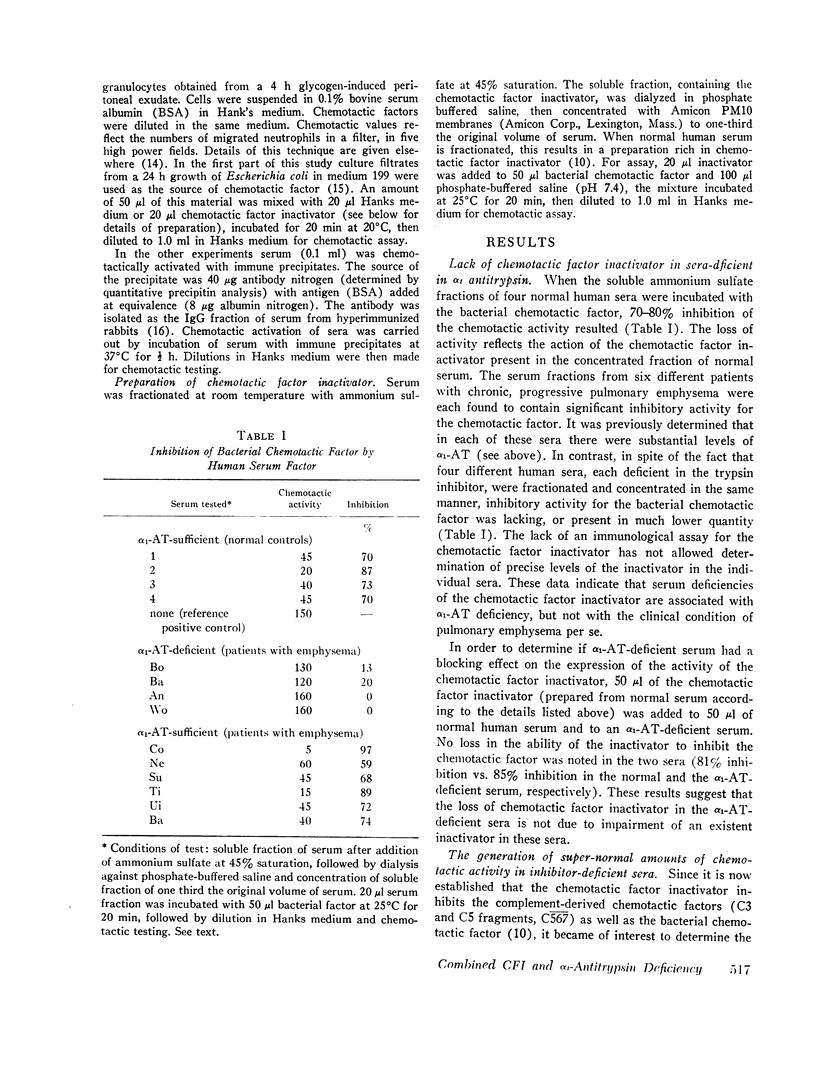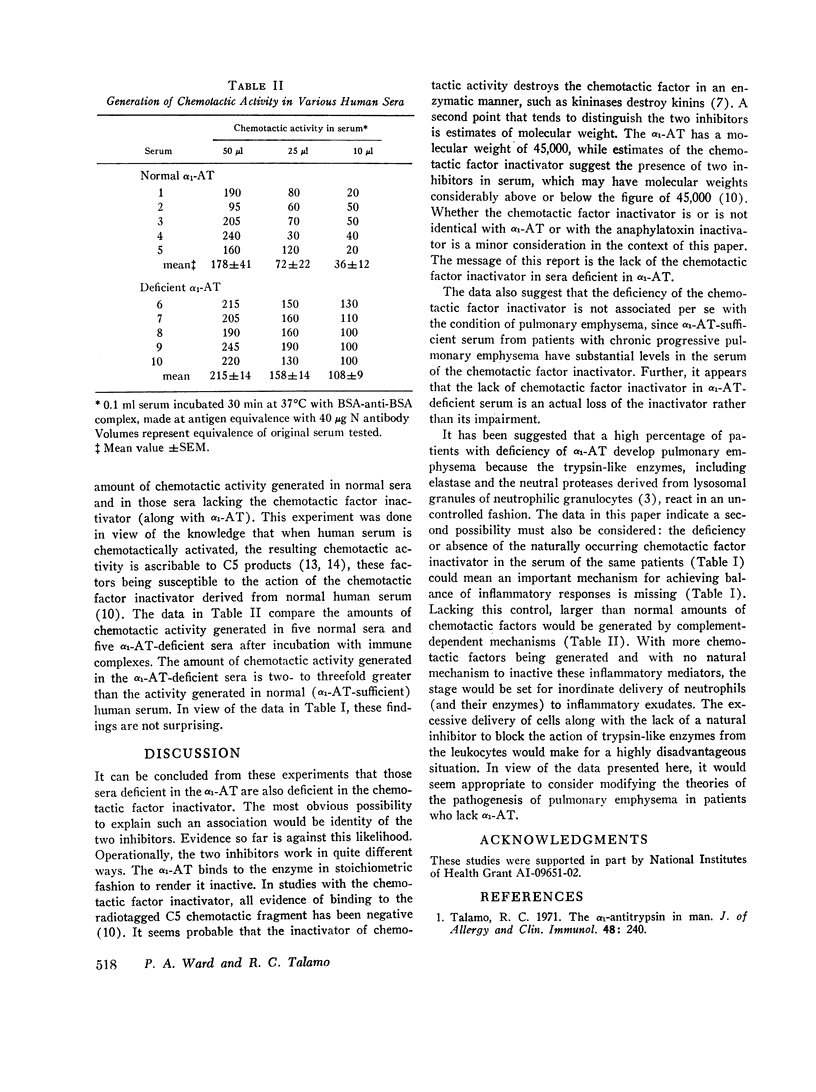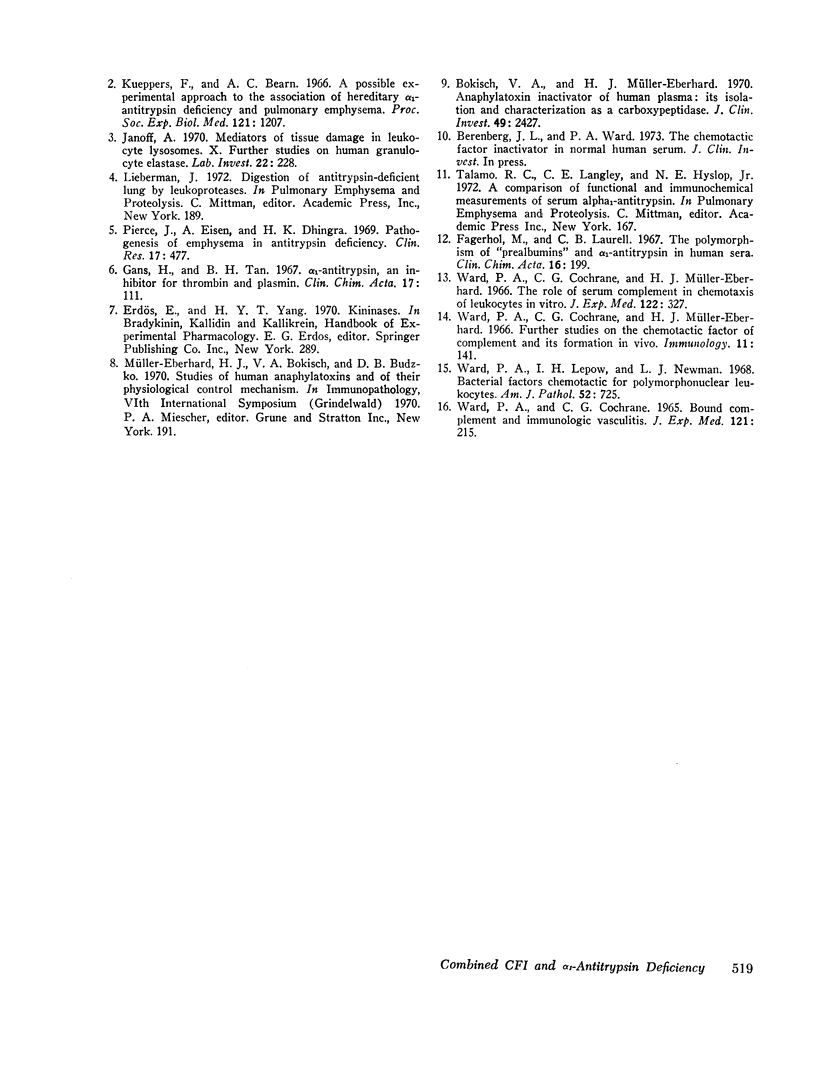Abstract
As revealed by appropriate fractionation procedures, human serum deficient in α1-antitrypsin (α1-AT) is also deficient in the naturally occurring chemotactic factor inactivator. These serum donors had severe pulmonary emphysema. Serum from patients with clinically similar pulmonary disease, but with presence of α1-AT in the serum, showed no such deficiency of the chemotactic factor inactivator. When normal human serum and α1-AT-deficient human sera are chemotactically activated by incubation with immune precipitates, substantially more chemotactic activity is generated in α1-AT-deficient serum. These data indicate that in α1-AT-deficient serum there is an imbalance in the generation and control of chemotactic factors. It is suggested that the theory regarding development of pulmonary emphysema in patients lacking the α1-antitrypsin in their serum should be modified to take into account a deficiency of the chemotactic factor inactivator.
Full text
PDF



Selected References
These references are in PubMed. This may not be the complete list of references from this article.
- Bokisch V. A., Müller-Eberhard H. J. Anaphylatoxin inactivator of human plasma: its isolation and characterization as a carboxypeptidase. J Clin Invest. 1970 Dec;49(12):2427–2436. doi: 10.1172/JCI106462. [DOI] [PMC free article] [PubMed] [Google Scholar]
- Fagerhol M. K., Laurell C. B. The polymorphism of "prealbumins" and alpha-1-antitrypsin in human sera. Clin Chim Acta. 1967 May;16(2):199–203. doi: 10.1016/0009-8981(67)90181-7. [DOI] [PubMed] [Google Scholar]
- Gans H., Tan B. H. Alpha-1-antitrypsin, an inhibitor for thrombin and plasmin. Clin Chim Acta. 1967 Jul;17(1):111–117. doi: 10.1016/0009-8981(67)90104-0. [DOI] [PubMed] [Google Scholar]
- Janoff A. Mediators of tissue damage in leukocyte lysosomes. X. Further studies on human granulocyte elastase. Lab Invest. 1970 Mar;22(3):228–236. [PubMed] [Google Scholar]
- Kueppers F., Bearn A. G. A possible experimental approach to the association of hereditary alpha-1-antitrypsin deficiency and pulmonary emphysema. Proc Soc Exp Biol Med. 1966 Apr;121(4):1207–1209. doi: 10.3181/00379727-121-31006. [DOI] [PubMed] [Google Scholar]
- WARD P. A., COCHRANE C. G. BOUND COMPLEMENT AND IMMUNOLOGIC INJURY OF BLOOD VESSELS. J Exp Med. 1965 Feb 1;121:215–234. doi: 10.1084/jem.121.2.215. [DOI] [PMC free article] [PubMed] [Google Scholar]
- WARD P. A., COCHRANE C. G., MUELLER-EBERHARD H. J. THE ROLE OF SERUM COMPLEMENT IN CHEMOTAXIS OF LEUKOCYTES IN VITRO. J Exp Med. 1965 Aug 1;122:327–346. doi: 10.1084/jem.122.2.327. [DOI] [PMC free article] [PubMed] [Google Scholar]
- Ward P. A., Cochrane C. G., Muller-Eberhard H. J. Further studies on the chemotactic factor of complement and its formation in vivo. Immunology. 1966 Aug;11(2):141–153. [PMC free article] [PubMed] [Google Scholar]
- Ward P. A., Lepow I. H., Newman L. J. Bacterial factors chemotactic for polymorphonuclear leukocytes. Am J Pathol. 1968 Apr;52(4):725–736. [PMC free article] [PubMed] [Google Scholar]


